I don’t have much of a sweet tooth, I’m definitely a savoury kind of guy. That means I don’t make puddings and desserts very often, and the thought of making something like a set custard sends shivers down my spine. Well, I have a Crème Caramel to make, I guess I should get it out of the way.
For those not familiar with it, Crème Caramel is a set vanilla custard, covered in a caramel syrup. When made well, they are delicious. Sadly, they’re often not made very well. The recipe warns of the signs of a poor Crème Caramel. Holes mean overcooked custard. Rubbery texture, almost separated eggy curds, and brown skin lurking underneath are all frowned upon. Making a good Crème Caramel seemed like a tall order.
To kick things off, I heated up some milk with a vanilla pod and then left that to cool. Next, the caramel. Heat sugar and water in a pan, boil gently until it turns to caramel. I remembered from when I made the oranges in caramel, I burned the caramel whilst I was faffing about trying to take a photo, so no caramel-in-progress photos this time. As soon as it turned the right shade of golden brown, I poured it into a casserole bowl and left it to set.
We get all our eggs from the farm down the road that has a rather snazzy machine – you put £3 into it, and a little door springs open, revealing a dozen freshly laid organic eggs. So, to make this perfect custard, I went out with my £3 and got a batch of fresh eggs. Surely, the fresher the better.
The recipe called for two whole eggs and four egg yolks. I took my farm-fresh eggs and cracked them into a bowl. Well, it must be that time of year. Every single egg I cracked open was a double-yolker. Now, they look very cute, but was that going to affect my custard? The yolks were smaller than regular egg yolks, but there were two in each egg. I figured that we probably had a slightly higher proportion of egg yolks than we would normally, but decided that it would just result in a slightly richer custard. It would be fine, I was sure.
I beat the eggs gently with some sugar. And then the recipe said to strain the eggs over the infused milk. Strain the eggs? Seriously? I’ve never strained eggs in my life. These people have a real thing about sieving and straining. OK, I strained the eggs into the milk and mixed gently, trying hard to avoid generating a froth (another faux pas, according to the recipe). I left the mixture to rest – apparently that helps dissipate any air bubbles.
Now for the cooking. I skimmed a few bits of froth off the top and then poured the mixture over the top of the caramel. I placed it in a bain-marie (a roasting tin filled with water), and cooked in the oven for 1½ hours. After the allotted time, I took it out and checked on it. It looked like it was done, but – it had a brown skin on top. The brown skin is one of the signs of a bad Crème Caramel. I had failed. I thought about it for a moment. I reckon the brown skin was caused because this was a fan oven. The circulating air would have caused the top to dry out sooner, and so brown a little. I guess I should have covered it with a little baking parchment or something. I decided the brown skin wasn’t necessarily a sign of complete failure, but it certainly wasn’t desirable.
I left the Crème Caramel to cool and then put it in the fridge. A good few hours later, we were ready for the grand unveiling. I now had to turn the Crème Caramel out onto a plate. I ran a palette knife around the side of the bowl, placed a plate over the top and quickly flipped the whole thing over. I couldn’t bear to look. What if it had broken up as it turned over? What if it hadn’t set properly and was really just a bowl of wet, runny custard? I gingerly lifted up the bowl and peered underneath. It looked perfect. The custard looked firm, but not too firm. The caramel covered the top of the custard and ran gently down the sides, pooling on the plate below. I could see no holes – it wasn’t overcooked.
And it was delicious. A soft, delicate custardy flavour, with the burnt sugar taste of the caramel providing a nice contrast. Soft and creamy, not at all rubbery. The brown skin lining the base was nothing but a minor distraction. I sighed with relief.
Sue says:
Custards are such a forgotten delight in this day and age. When people think of custard now it’s usually some sort of Bird’s yellow powder mixed with boiling milk! But a real custard, made with eggs and cream, is just a delight.
Delicate, yet full of flavour from the eggs (which must be very fresh). A soft yellow colour with a consistency that is firmer than jelly but not at all stiff or rubbery. It takes patience and confidence to make a good custard and they can be unpredictable little beasts.
This one was a triumph. Dave was so worried about turning it out. If it had been me, I would have wimped out and eaten it out of the basin! But he need not have feared. It fell out of its cocoon onto the plate with complete ease; with its caramel sauce running over it as it settled. It looked beautiful. The texture was very good and the flavour was vanillary and delicate.
10/10
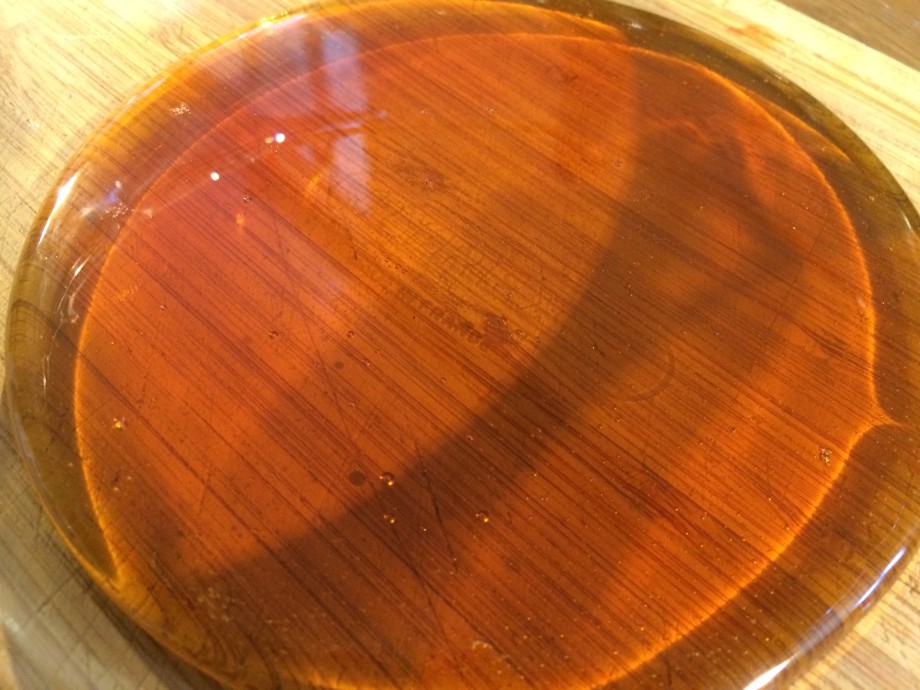
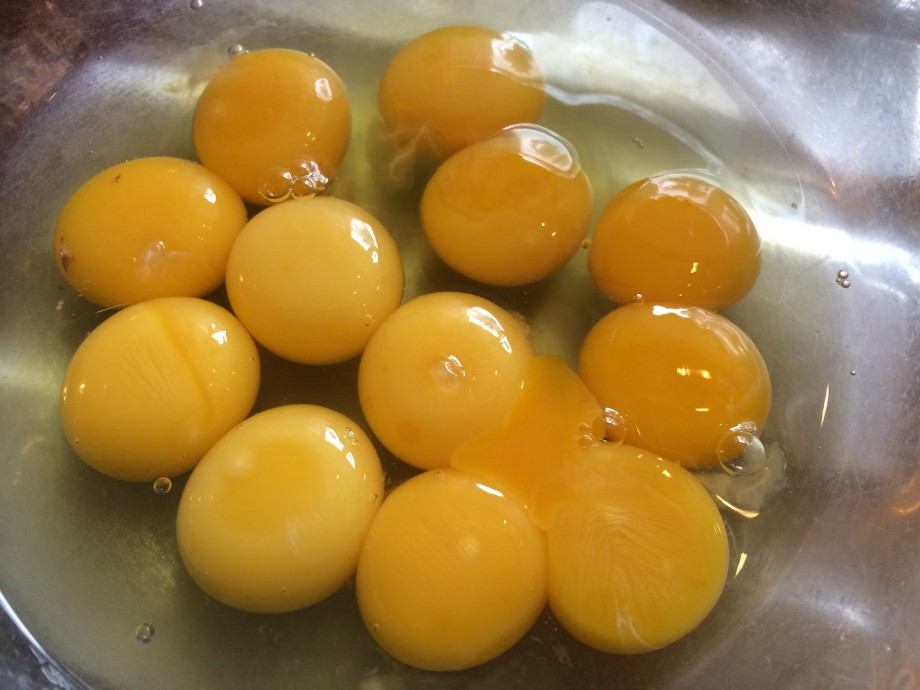
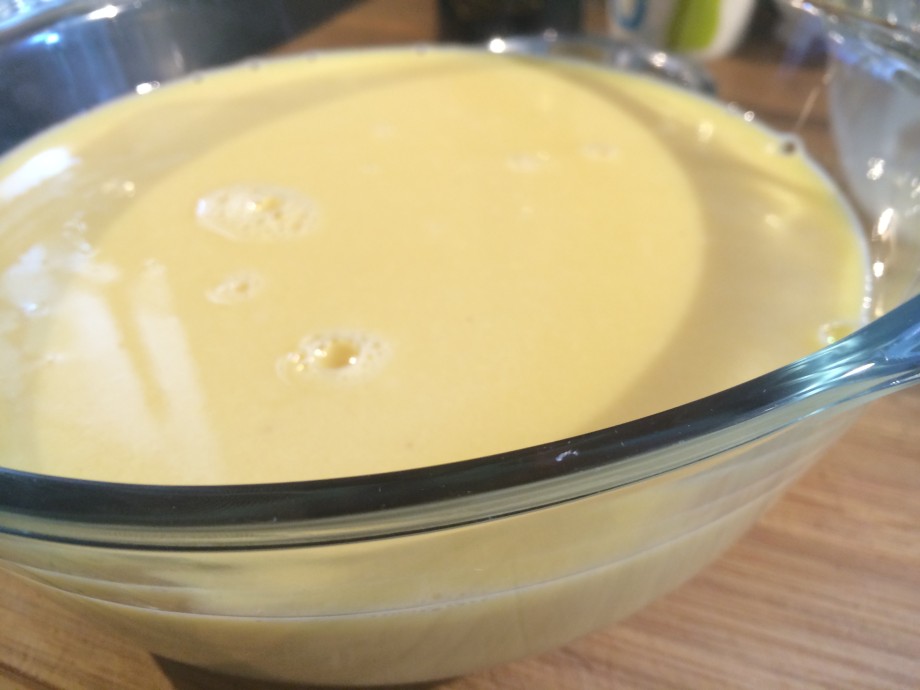
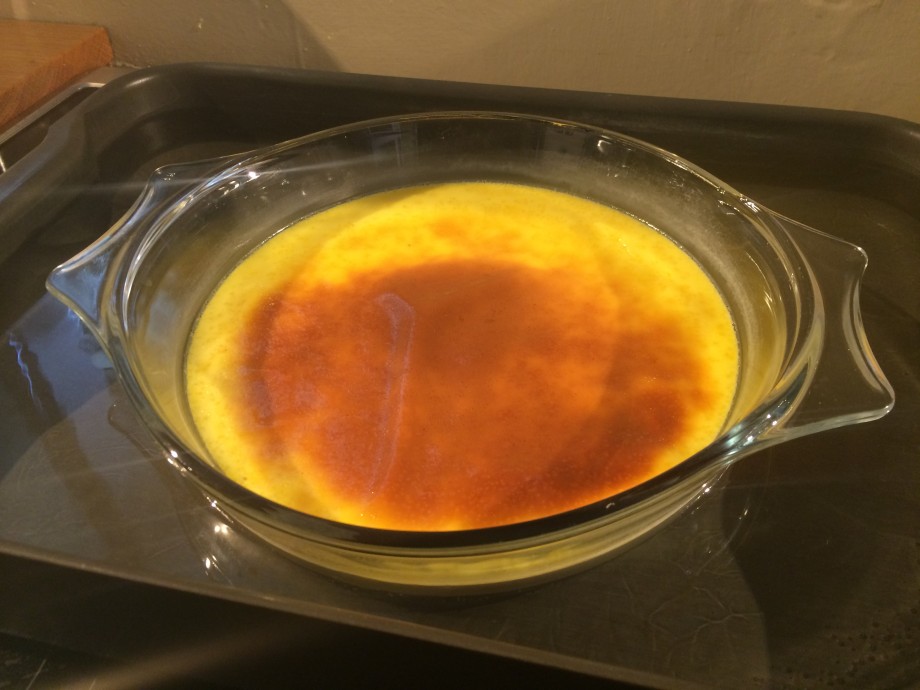
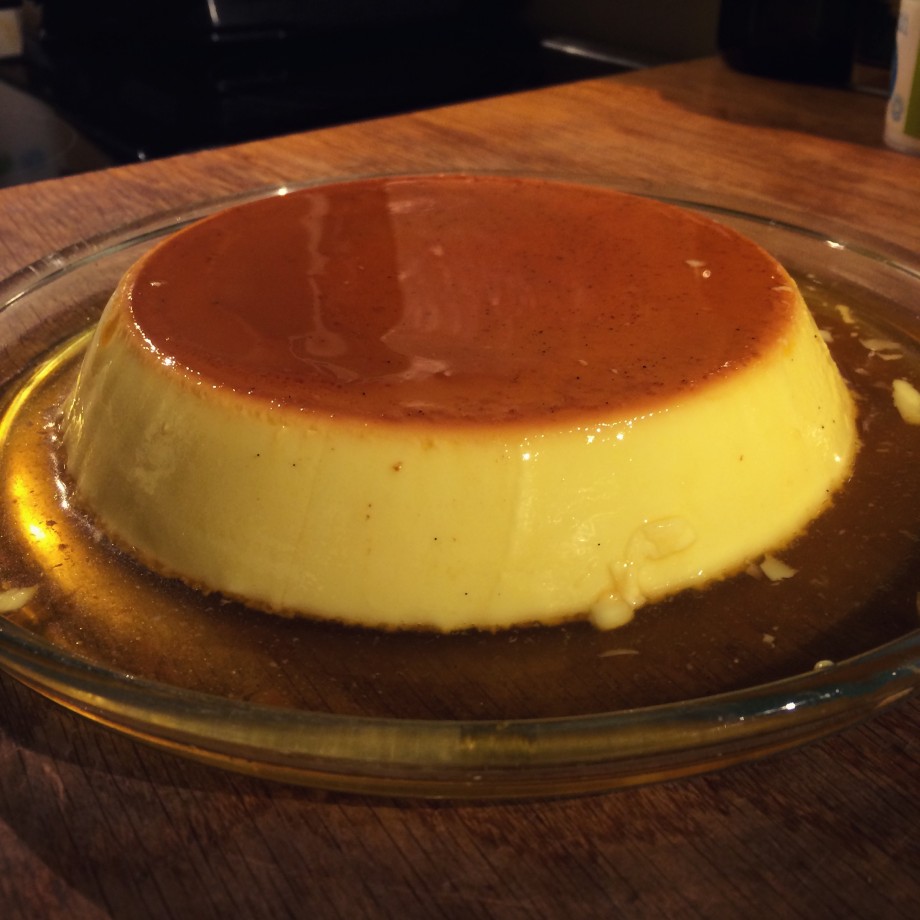
Well done!
That does look very delicious. Keep up the good work, I am really enjoying reading as you cook each recipe!
I’m glad you’re enjoying the posts! There should be a couple more coming this week…
I’m eagerly checking the blog each day 🙂
Keep checking, I have a small backlog of posts to write up right now. Hoping to get the next one up tonight 🙂